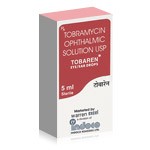Cystic Fibrosis: Causes, Impact, Treatment, and Life Expectancy


Cystic fibrosis (CF) is a life-shortening genetic disorder that primarily affects the respiratory and digestive systems. Despite being one of the most common life-threatening inherited diseases in the world, it has remained misunderstood by the general public. Thanks to advances in research and treatment, the outlook for individuals diagnosed with CF has dramatically improved in recent decades. Understanding the complexity of this condition requires exploring its genetic roots, clinical manifestations, impact on daily life, and the evolving approaches to treatment, including the use of medications like Tobaren.
The Genetic Foundation of Cystic Fibrosis
At its core, cystic fibrosis is a disorder caused by a mutation in the CFTR (Cystic Fibrosis Transmembrane Conductance Regulator) gene. This gene produces a protein that regulates the movement of chloride and sodium ions across epithelial cell membranes. When the CFTR gene is mutated, the protein it encodes does not function properly, leading to the production of thick and sticky mucus in various organs, especially the lungs and pancreas.
This defective mucus clogs airways and ducts, making it difficult for individuals with CF to breathe and digest food efficiently. The disease is autosomal recessive, which means a person must inherit one faulty gene from each parent to develop the disorder. Carriers — those with only one mutated gene — do not develop CF themselves but can pass the gene on to their children.
Life Expectancy and Progress in Care
In the early to mid-20th century, children born with cystic fibrosis rarely lived past early childhood. However, due to significant improvements in diagnostic techniques, airway clearance methods, antibiotic therapies, and nutrition management, the median life expectancy has increased substantially.
Today, people with CF are living into their 40s, 50s, and beyond. According to data from national CF registries in countries like the U.S., the median predicted survival age for individuals with CF is currently over 50 years, with some patients living well into their 60s and 70s. This is a remarkable achievement, underscoring the importance of ongoing medical care and innovations in treatment.
Core Symptoms of Cystic Fibrosis
Cystic fibrosis manifests in a range of symptoms that can vary in intensity and type depending on the organs affected and the individual's specific genetic mutation. Respiratory complications are the hallmark of CF, as thick mucus accumulates in the lungs, leading to persistent coughing, wheezing, and frequent lung infections such as bronchitis or pneumonia.
Another common symptom is difficulty in digesting food, as thick mucus blocks the ducts of the pancreas, preventing digestive enzymes from reaching the intestines. This results in malnutrition, poor growth, and bulky, greasy stools.
In many patients, salty skin is also noticeable due to excessive loss of salt through sweat. This can sometimes lead to dehydration and electrolyte imbalances, especially during hot weather or physical activity.
Three characteristic symptoms that help clinicians identify cystic fibrosis include chronic coughing with mucus production, frequent respiratory infections, and poor weight gain despite a healthy appetite. These indicators often prompt further diagnostic testing, such as a sweat chloride test or genetic screening.
Living with Cystic Fibrosis: Daily Realities and Challenges
For individuals diagnosed with CF, life is centered around consistent disease management. The condition demands strict adherence to daily routines involving respiratory therapies, nutritional support, medications, and frequent doctor visits. Many start and end their days with airway clearance techniques — these may include chest physiotherapy or devices that help loosen and expel mucus from the lungs.
Nutrition plays a vital role in maintaining energy and growth. People with CF are usually prescribed pancreatic enzyme replacements with meals to aid digestion. High-calorie, high-fat diets are often recommended to counteract malabsorption and the increased caloric demands of chronic illness.
Exercise is also encouraged, as physical activity improves lung function and overall well-being. However, fatigue and frequent infections can interrupt school, work, and social activities, which can be frustrating and isolating for many patients.
Despite these burdens, many people with CF lead fulfilling lives. With appropriate care, they graduate from college, build careers, and start families. The social and emotional dimensions of the disease are addressed through counseling, support groups, and mental health services tailored to chronic illness.
Advances in Medical Treatment
Over the past decade, the landscape of CF treatment has changed dramatically with the development of CFTR modulators — drugs that target the defective CFTR protein. These drugs improve the function of the protein at the cellular level and have shown great promise in improving lung function and overall health outcomes.
For those who are not eligible for CFTR modulators or who have developed chronic infections, particularly with bacteria like Pseudomonas aeruginosa, antibiotic therapy remains essential. Among the medications used, Tobaren (a brand name for tobramycin) plays a crucial role.
Tobaren: A Targeted Approach to Chronic Infections
Tobaren is an inhaled formulation of tobramycin, an aminoglycoside antibiotic specifically used to combat chronic lung infections in people with CF. One of the most persistent and dangerous threats in cystic fibrosis is infection with Pseudomonas aeruginosa. This bacteria thrives in the thick mucus found in CF lungs and is notoriously resistant to many antibiotics.
Tobaren is administered via a nebulizer, delivering the antibiotic directly to the lungs where it is needed most. This targeted approach minimizes systemic side effects and enhances the drug’s effectiveness. It works by interfering with bacterial protein synthesis, effectively killing or inhibiting the growth of Pseudomonas.
Clinical trials have demonstrated that inhaled tobramycin reduces the density of bacteria in sputum, improves lung function, and reduces the frequency of acute pulmonary exacerbations. Tobaren is usually prescribed in cycles — commonly 28 days on followed by 28 days off — to prevent the development of antibiotic resistance and to maintain long-term efficacy.
While Tobaren is not a cure for CF, it represents a powerful tool in the management of the disease, helping to extend life expectancy and improve the quality of daily living. It is especially valuable for those whose lung function is declining due to persistent bacterial colonization.
The Future of Cystic Fibrosis Care
As research continues, there is growing hope for even more effective treatments and possibly a cure. Gene therapy is one of the most promising areas, aiming to correct the underlying genetic defect by introducing a functional CFTR gene into affected cells. Other research efforts are exploring advanced CFTR modulators that may benefit a broader range of mutations.
The integration of digital health tools, such as remote monitoring devices and mobile health apps, is also transforming how care is delivered, allowing patients to track symptoms, communicate with care teams, and receive timely interventions.
Equally important is the growing focus on mental health and psychosocial support, recognizing that managing a chronic illness like CF impacts not just the body, but the mind and spirit.
Conclusion
Cystic fibrosis remains a formidable challenge for those who live with it, but it is no longer a guaranteed death sentence in early life. Through genetic understanding, clinical innovation, and therapeutic breakthroughs like Tobaren, individuals with CF are living longer, healthier, and more fulfilling lives.
The key to continued progress lies in sustained investment in research, accessible healthcare, and comprehensive patient support systems. With these pillars in place, the future for those affected by cystic fibrosis holds promise, resilience, and hope.
Medically Reviewed by Dr. Faride Ramos, MD
(Updated at May 21 / 2025)

